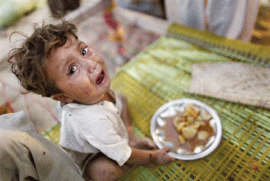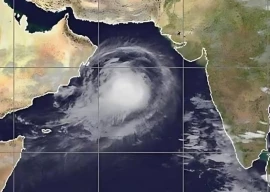
Opium poppy cultivation touched a record high in 2014 and this year is expected to yield another bumper harvest, highlighting the failure of the multi-billion-dollar US-led campaign to crack down on the lucrative crop.
Addiction levels have also risen sharply -- from almost nothing under the 1996-2001 Taliban regime -- giving rise to a new generation of addicts since the 2001 US-led invasion of Afghanistan.
"In 2005, the number of drug users was 900,000, it went up to... 1.6 million in 2012. In 2014, the number increased to three million, which is very worrying," Afghan Health Minister Ferozuddin Feroz told reporters, citing a survey conducted jointly with the US State Department.
"This survey shows an alarming increase of drug users in Afghanistan both in the cities and in rural areas," he said, adding that children and women were among the drug users.
READ:Intercepted On Motorway: Afghan held with 720kg hashish
Opioids, including opium, are the most prevalent class of drugs used in the country, the survey said.
It showed a national drug use rate of 11 percent, one of the highest in the world, with drug use in rural areas three times higher than in urban areas.
"Drug use is an Afghan problem, an American problem and a problem for all the 195 countries represented in the United Nations," said William Brownfield, US assistant secretary for counter-narcotics affairs.

Afghans doing drugs along Kabul river. PHOTO: AFP
"It is not a foreign problem, it is a national problem."
Afghan President Ashraf Ghani echoed similar views on Sunday, saying drug addiction was fuelling the country's insurgency.
"Those days when we thought drug addiction is not a problem affecting us have ended," he said.
READ:Afghan runaways fight heroin addiction on Pakistan street
"This is a big threat because a young addict turns into a soldier fuelling instability," he added.
Poppy farmers are often taxed by the Taliban, who use the cash to help fund their insurgency against government and NATO forces.
Afghanistan grows about 80 percent of the world's opium, which is used to produce highly addictive heroin.
The total area under opium poppy cultivation rose to 224,000 hectares (553,500 acres) in 2014, a seven percent increase on the previous year, the United Nations Office on Drugs and Crime (UNODC) said in November.






1732954110-0/Untitled-design-(13)1732954110-0-270x192.webp)

1732952041-0/Untitled-design-(12)1732952041-0-270x192.webp)








COMMENTS
Comments are moderated and generally will be posted if they are on-topic and not abusive.
For more information, please see our Comments FAQ